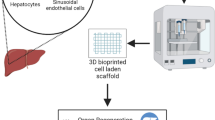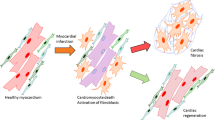Abstract
One the current challenges of modern hepatology is to find new approaches to stimulate liver regeneration and to find new methods for liver disease treatment. Cell therapies, which are based on using regional stem cells for disease treatment, are under active development. However, studies, devoted to their transplantation, are currently scarce. In recent years, hepatic stellate cells are considered to be hepatic stem cells. It is known that activated hepatic stellate cells can transdifferentiate into myofibroblasts and lead to liver fibrosis. The aim of our work was to study the influence of native and activated hepatic stellate cells in vivo by lead nitrate injection after transplantation into partial hepatectomized rats, which is considered to be a classical model to study liver regeneration. Injection of 2-acetylaminofluorene (AAF), which selectively eliminates hepatocyte proliferation, was used to understand the hepatic stellate cells role in liver regeneration process better. Our results suggest that transplanted native and activated hepatic stellate cells can differentiate into hepatocyte-like cells and positively influence liver regeneration without inducing liver fibrosis.














Similar content being viewed by others
References
Ramadori, G. (1991). The stellate cell (Ito-cell, fat-storing cell, lipocyte, perisinusoidal cell) of the liver. New insights into pathophysiology of an intriguing cell. Virchows Archiv. B, Cell Pathology Including Molecular Pathology, 61(3), 147–158.
Kordes, C., Sawitza, I., Müller-Marbach, A., et al. (2007). CD133+ hepatic stellate cells are progenitor cells. Biochemical and Biophysical Research Communications, 52(2), 410–417.
Marsden, E. R., Hu, Z., Fujio, K., Nakatsukasa, H., Thorgeirsson, S. S., Evarts, R. P. (1992). Expression of acidic fibroblast growth factor in regenerating liver and during hepatic differentiation. Laboratory Investigation, 67(4), 427–433.
Schirmacher, P., Geerts, A., Pietrangelo, A., Dienes, H. P., Rogler, C. E. (1992). Hepatocyte growth factor/hepatopoietin A is expressed in fat-storing cells from rat liver but not myofibroblast-like cells derived from fat-storing cells. Hepatology, 15, 5–11.
Maher, J. J. (1993). Cell-specific expression of hepatocyte growth factor in liver. Upregulation in sinusoidal endothelial cells after carbon tetrachloride. Journal of Clinical Investigation, 91(5), 2244–2252.
Pinzani, M., Knauss, T. C., Pierce, G. F., Hsieh, P., Kenney, W., Dubyak, G. R., et al. (1991). Mitogenic signals for platelet-derived growth factor isoforms in liver fat-storing cells. American Journal of Physiology, 260(3), C485–C491.
Higgins, G. M., & Anderson, R. M. (1931). Experimental pathology of the liver: I. Restoration of the liver of the white rat following partial surgical removal. Archives of Pathology, 12, 186–202.
Gumerova, A. A., Valeeva, I. K., Kiiasov, A. P. (1999). The “direct mitogen” lead nitrate causes an intensification in lipid peroxidation and Ito cell activation in the rat liver [article in Russian]. Ontogenez, 30(4), 289–295.
Acknowledgments
The work was performed according to the Russian Government Program of Competitive Growth of Kazan Federal University and subsidy allocated to Kazan Federal University for the state assignment in the sphere of scientific activities and financial support by grant no. 12-04-97088 of Russian Foundation for Basic Research.
Author information
Authors and Affiliations
Corresponding author
Ethics declarations
Conflict of Interest
The authors declare that they have no conflict of interest.
Rights and permissions
About this article
Cite this article
Zaikina, E.I., Shafigullina, A.K., Titova, A.A. et al. Native and Activated Hepatic Stellate Cells Stimulate Liver Regeneration in Rats After Partial Hepatectomy and 2-Acetylaminofluorene Injection. BioNanoSci. 7, 246–250 (2017). https://doi.org/10.1007/s12668-016-0353-3
Published:
Issue Date:
DOI: https://doi.org/10.1007/s12668-016-0353-3




